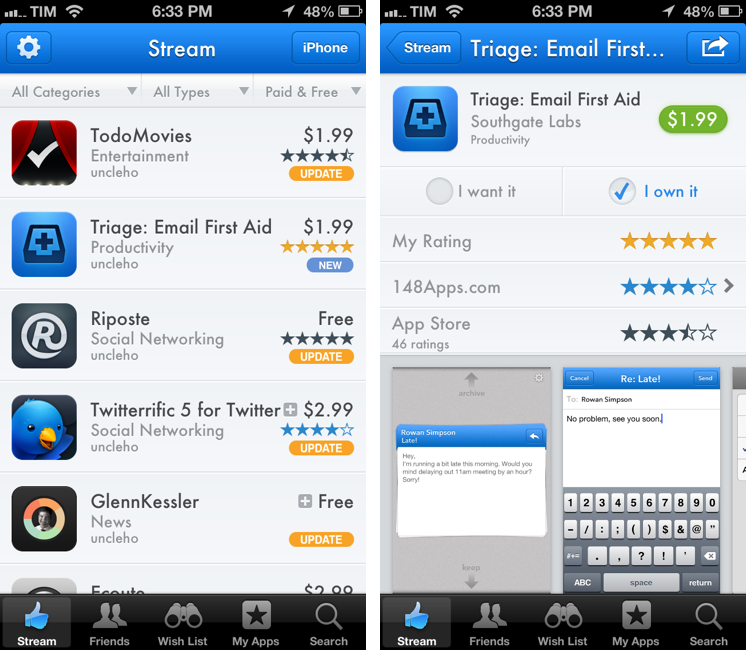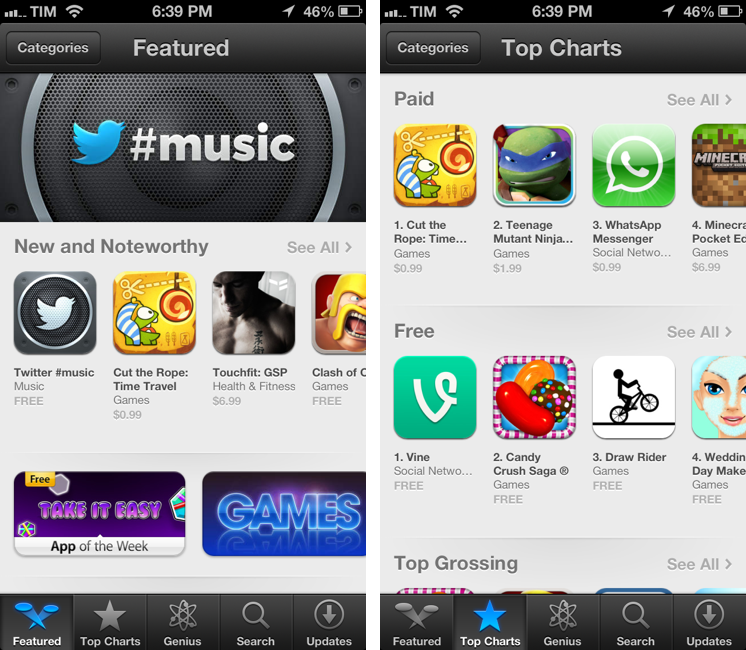Edge:
This is in no way atypical for some of the more successful game developers, and all of that is done in hopes that the new games get featured on a variety of app stores, causing that oh-so-important spike in early sales.
The post refers to Jessica Lessin’s article on The Wall Street Journal about the launch of ZeptoLab’s latest game:
Overall, ZeptoLab says it will spend around $1 million launching “Cut the Rope: Time Travel,” which traces the adventures of the green monster Om Nom as he meets versions of himself in time periods like the Renaissance and the Middle Ages. On top of that sum, which includes the costs of animation, the company is counting on some free help by promoting the game inside its other titles.
After nearly five years, the App Store is a huge market and game developers are throwing big money at it. In ZeptoLab’s case, add the fact that the game has also launched on Android – it doesn’t always happen, though – and you understand why large companies are capitalizing on the installed base of mobile devices.
There’s another side of the coin: indie developers with great ideas but limited budgets. Take this Polygon article about Ridiculous Fishing as an example:
We did everything…I literally didn’t sleep for three days before the launch, just working and making sure that every reviewer and every website and every person that I could send the game to had the game.
Different games, different needs. Vlambeer doesn’t have the same resources of ZeptoLab and they opted for a different pricing scheme.
Smaller indie developers aren’t “less important” than established, popular game companies: because of the freedom that generally comes with independent creation, indie games tend to explore concepts and game mechanics that larger studios are more skeptical about. With the rise and consolidation of app stores and digital delivery platforms, indie games have become a fundamental piece of any device’s catalogue. Ask Sony. Ask Nintendo. Take a look at Kickstarter, with well-funded game and hardware projects.
On our end of the spectrum, I’d say that Apple is doing a good job overall. The App Store’s front page is skewed towards free-to-play games from large studios and publishers, but, on the flip side, Apple has featured indie titles numerous times in the past, and it also differentiates between “big name publishers” and smaller titles in their curated sections.
And yet, for a successful Ridiculous Fishing, there are hundreds of indie games with solid, original ideas that don’t get the recognition they’d deserve, either for a lack on the developer’s side (poor marketing skills is a common culprit) or an obvious inability to get noticed on the App Store. Other times it’s because the market is simply saturated, but, again, indie games tend to innovate and explore new ideas.
There’s a variety of improvements Apple itself could consider to help indie game (and app) developers, many of which I elaborated upon last year. Let developers offer videos alongside screenshots for those game/experiences that are hard to grasp in a couple of images; give more prominence to human curation and weekly sections; protect game makers against scams and rip-offs that are still far too present on the App Store.
Launching mobile games is expensive, especially for large companies. I hope Apple will keep working on finding the right balance between “big name games” and indie gems on the App Store.



